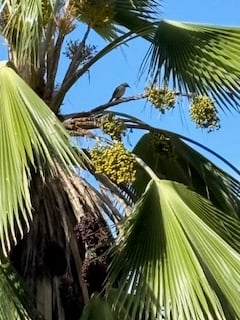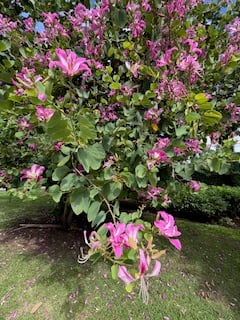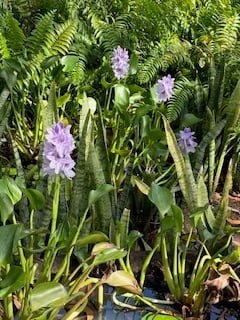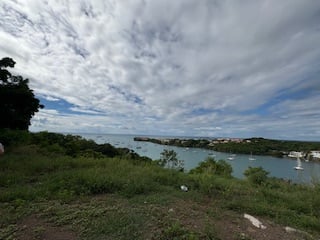We have been visiting Grenada regularly for more than 25 years, and over that time we have been able to visit many of the principal private gardens, some several times. Most are contributors to the Grenada stand that wins so many gold medals at the RHS Chelsea Flower Show. We have also witnessed the garden at the hotel change from one still betraying its marshy heritage, with fireflies around poorly kept shrubs, to one immaculately kept and horticulturally beautiful, worthy of a visit in its own right. Then on this trip a taxi driver said to us, “The area where your hotel is, is called L’Anse Aux Epines, Prickly Bay, named after the plants that used to grow there”, which we knew very well. Then he added, “of course they don’t exist anymore”, which made me just wonder where our creation of gardens has taken us environmentally. The gardens in Grenada have been created very much along British lines and contain many plant collections. Armed with my “Picture This” App, I decided I’d check just how many of the tropical plants were actually native to the Caribbean.

As one might expect, perhaps the commonest palm in the hotel garden is the Mexican Fan Palm, wind resistant and to be seen growing tall in Los Angeles. It seems little regarded by the birdlife. The birds are much more interested in the fruit of the date palms, a native of North Africa and Arabia. Nearly every serious gardener in Grenada seems to want to boast a Bismark Palm from Madagascar and the hotel is no exception. A fantastic landscape plant, but it seems only the female bears fruit, and that is essentially inedible, obviously not a great asset to the wildlife.

The tree that the bananaquits do love, with its multi-bloomed flowering stems high up on the tree, is a Heptapleurum actinophyllum (previously known as a Schefflera actinophylla) from Queensland. A tree in the hotel garden which does prove to be a native is a Wild Plumeria. This has large white flamboyant flowers but seemed to me to receive little interest from either insects or birds. Then I read that it only emits fragrance at night, to attract moths.

Every gardener in Grenada loves to show you with pride their range of brightly coloured gingers. Now, I innocently thought that these were various types of the ginger lily, Hedychium. We have one, a hardier type, originally from India, growing successfully in our garden back in Slapton. I also thought the gingers in Grenada were probably varieties native to the Caribbean. My App however tells me that these gingers are not from the Americas at all, but are a variety of different species, some also from India, but others from Malaysia and Indonesia.

In the water garden there is a plant with spectacular multiple blue flowers. The App confirms my suspicions. It is a water hyacinth. In South Africa, this plant is designated an invasive pest. That is where I have seen it before, mass rafts clogging the surface of a major reservoir/dam. The plant originates from Brazil. It is certainly a showstopper when seen close to, but…

Another possibly invasive but show stopping plant with its huge pink blooms, is the orchid tree; this time from India and Asia. It certainly grows with enthusiasm in the Caribbean.
All these plants stop us in our tracks, but they are hardly abuzz with insect life.
The downstairs rooms of the hotel all have private terraces and many of these are bordered by low hedges made from a shrub with bright red flowers with multiple florets. It seems to be only these that attract the regular attention of the
tiny green crested hummingbirds and cause the large orange butterflies to pause in their wanderings. These are coral plants, native to Central and northern South America. It obviously scores on two major points. It has lots of small flowers, and is thus a constant source of nectar, and it is probably a native.
Perched above one side of the hotel are its luxurious villas. We often climb up to them, to walk along their lanes lined with bougainvillea, and look out for pelicans and ospreys over the sea below. At the furthest point the lane ends with a large villa to one side and, to the other, a view down over a creek. The creek is quite far below, and between the lane and the cliff edge is unkept grassland containing small wildflowers. It is here that you are guaranteed to see scores, if not hundreds of butterflies, in particular a small yellow butterfly that you never see in the hotel gardens.
A reminder of what a difference an unkept strip can make, be it the Caribbean or beside a field hedge in England




